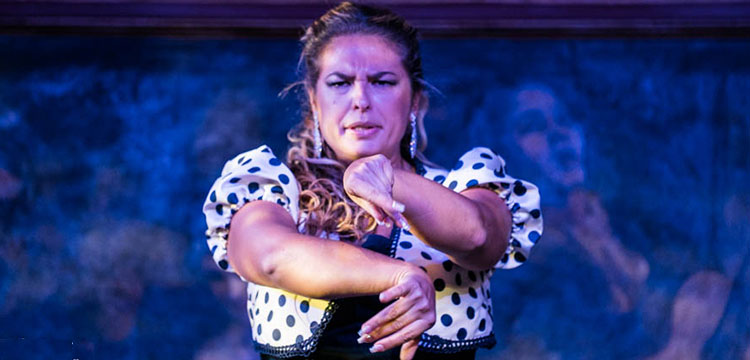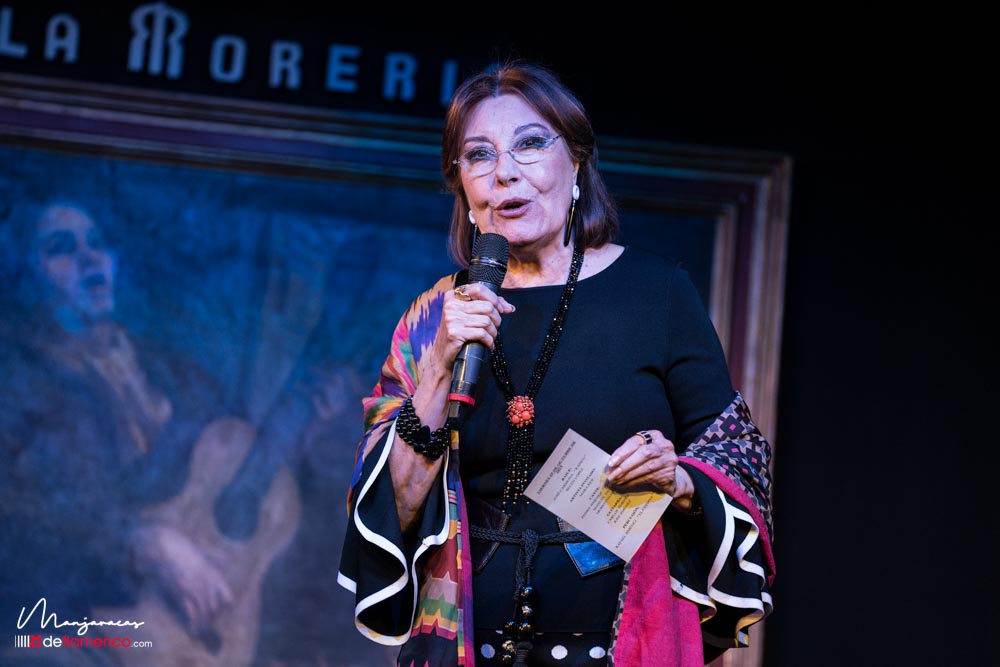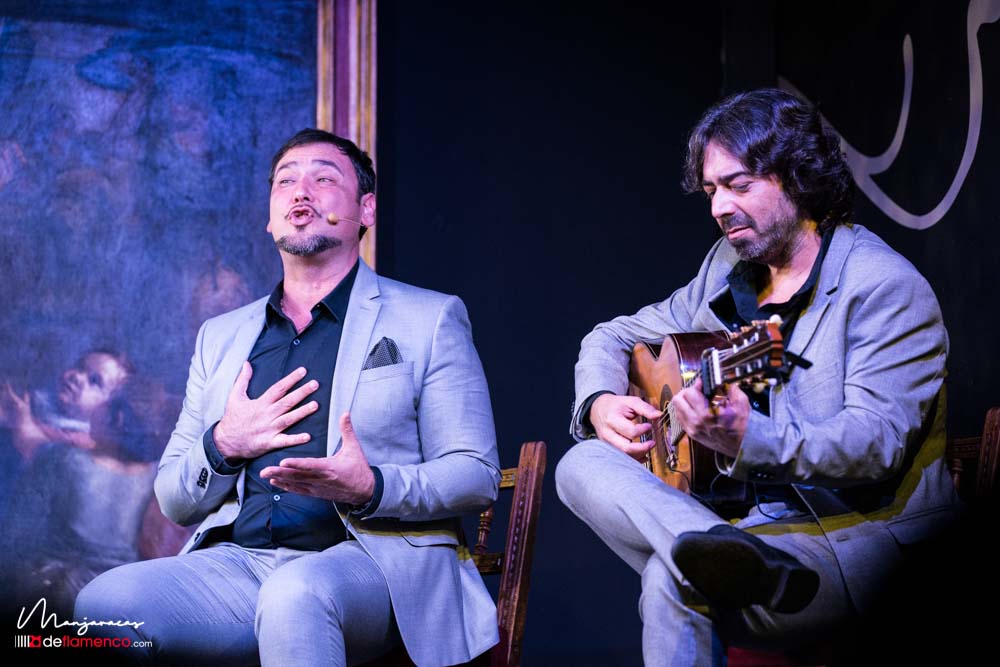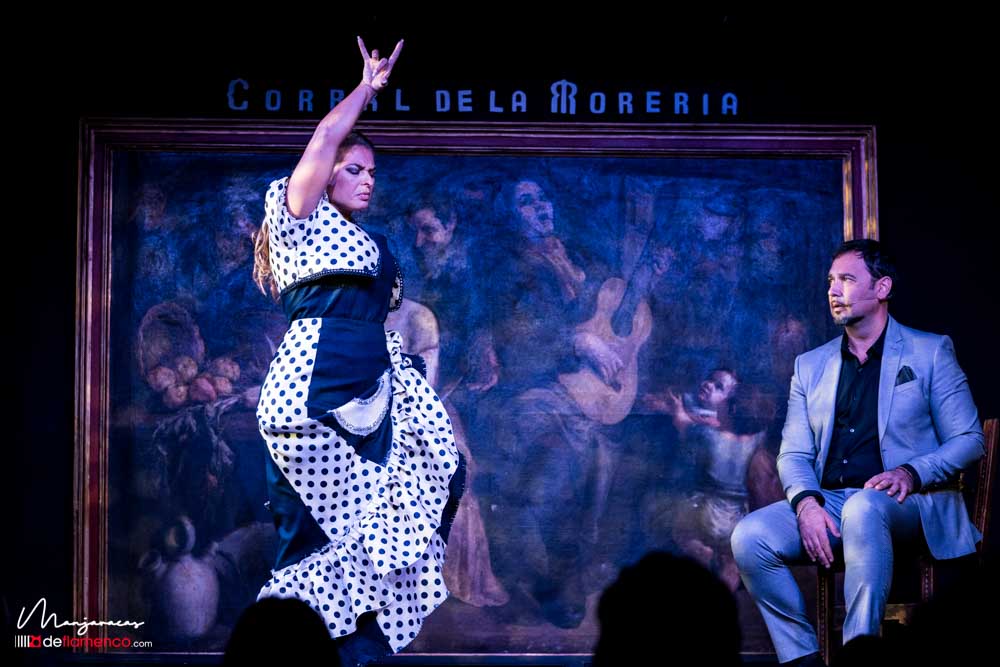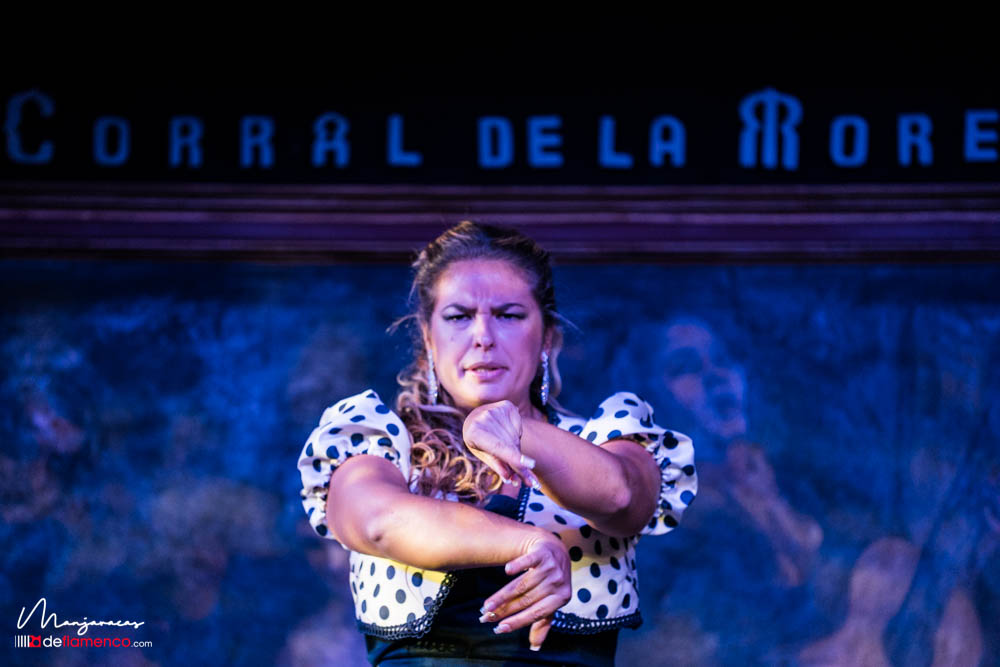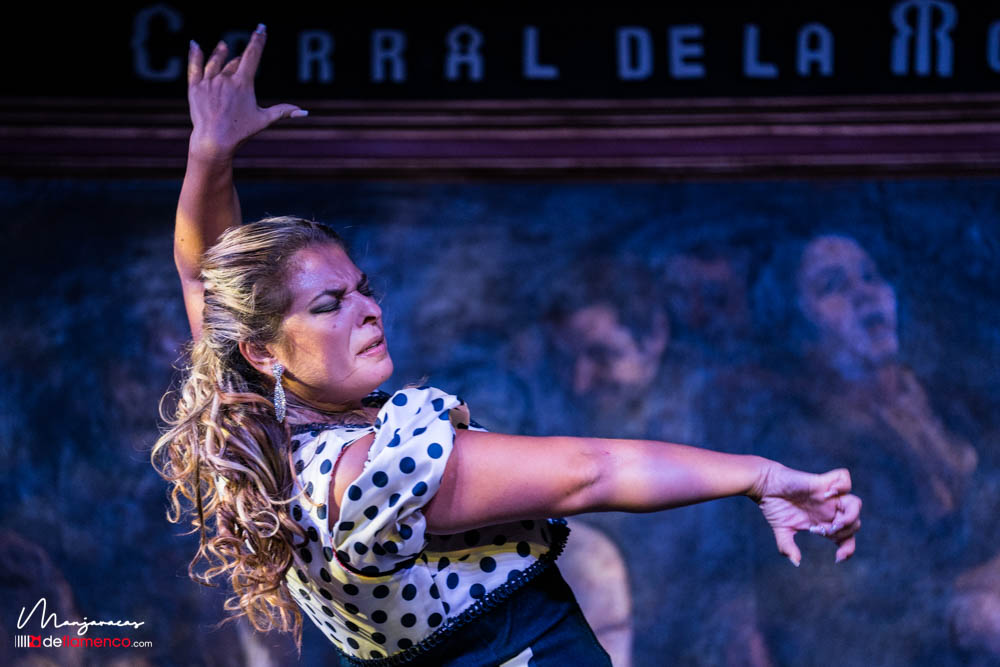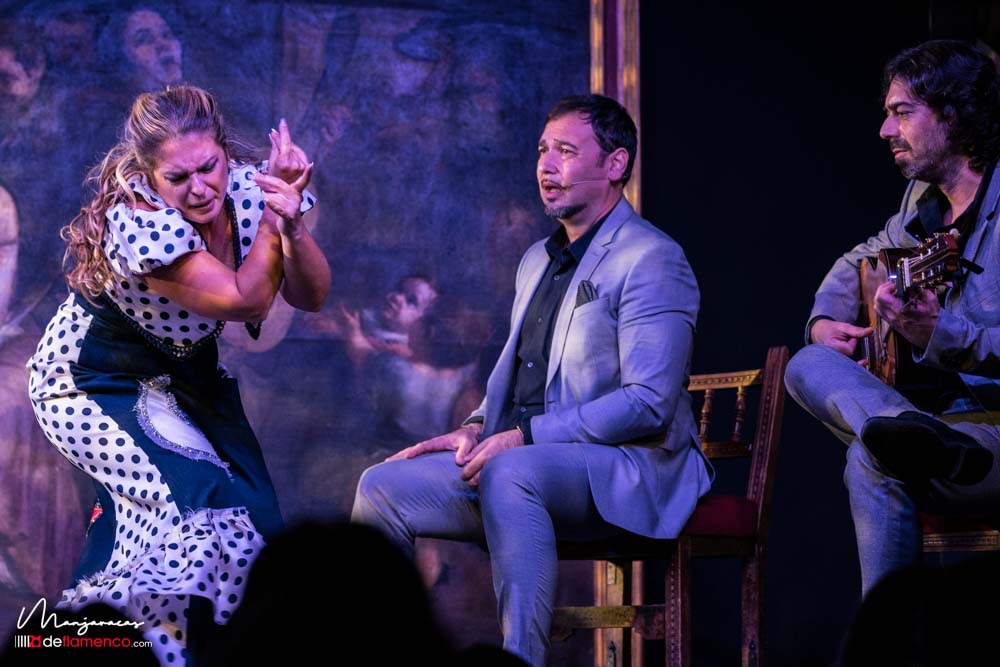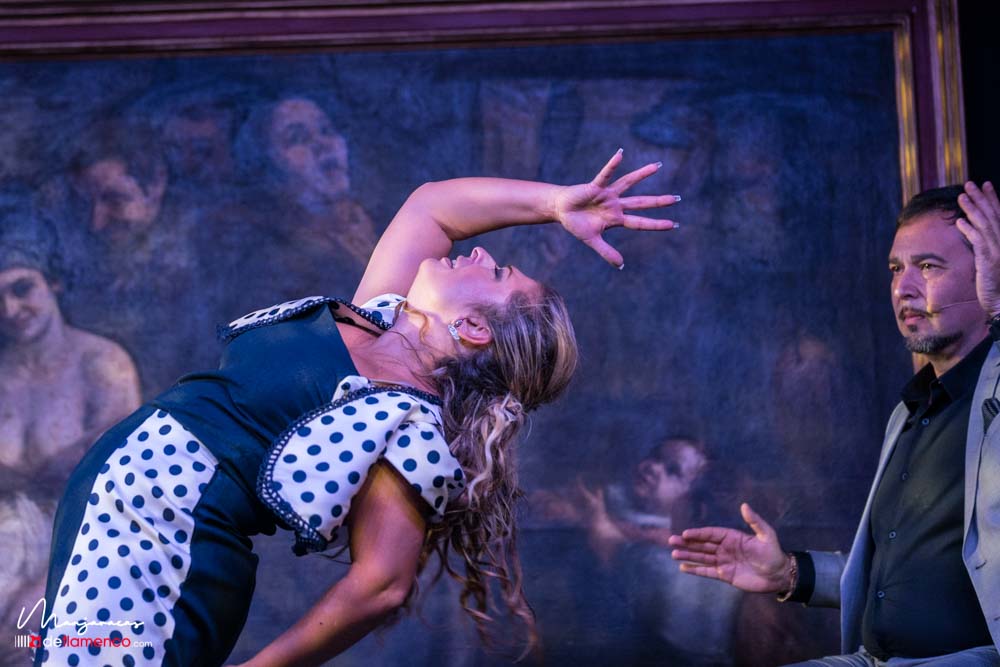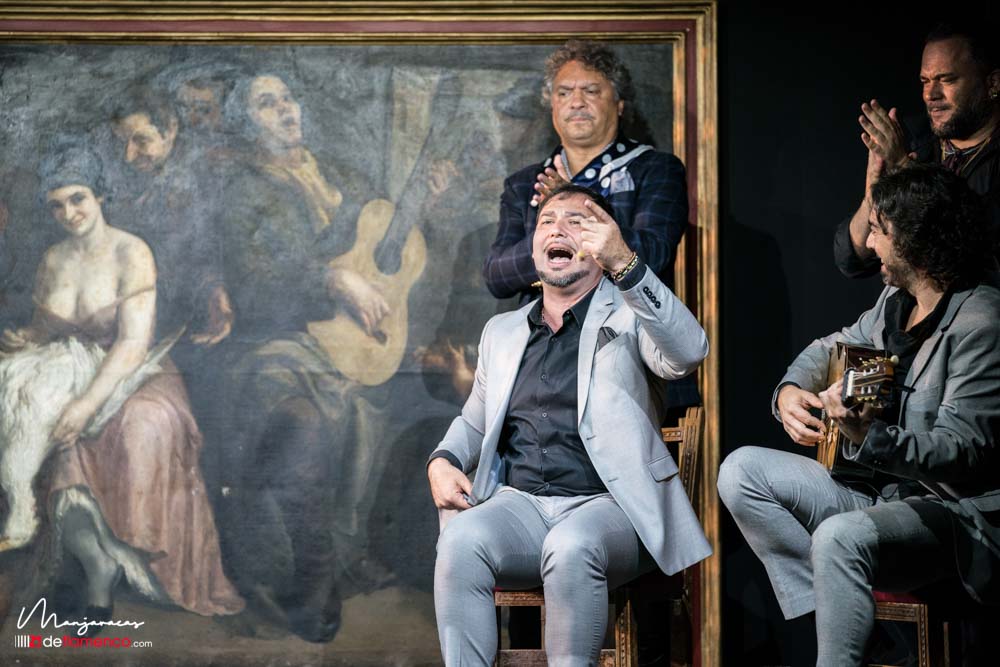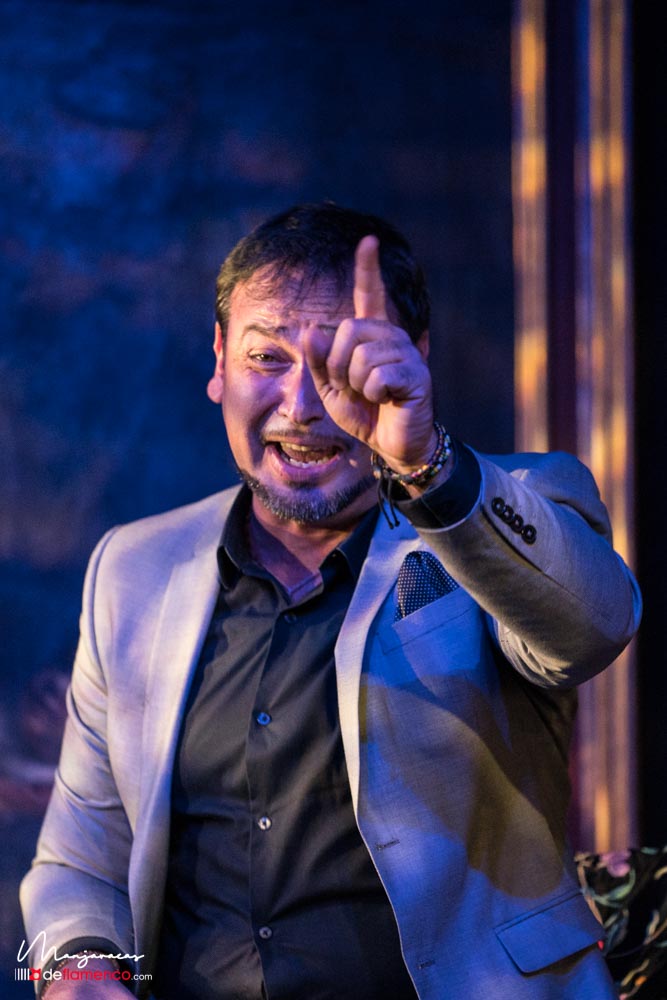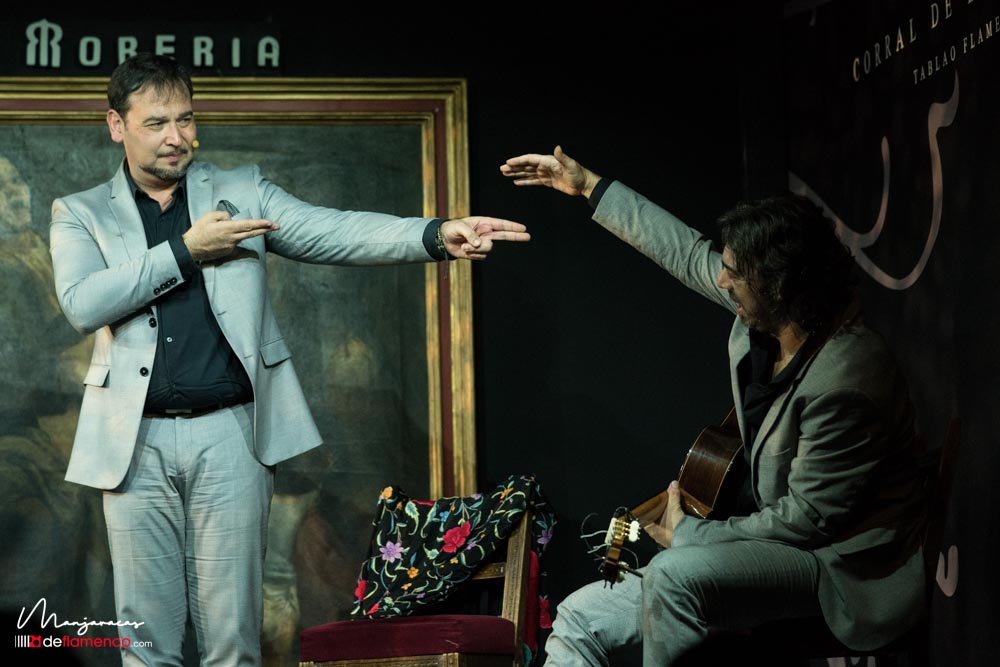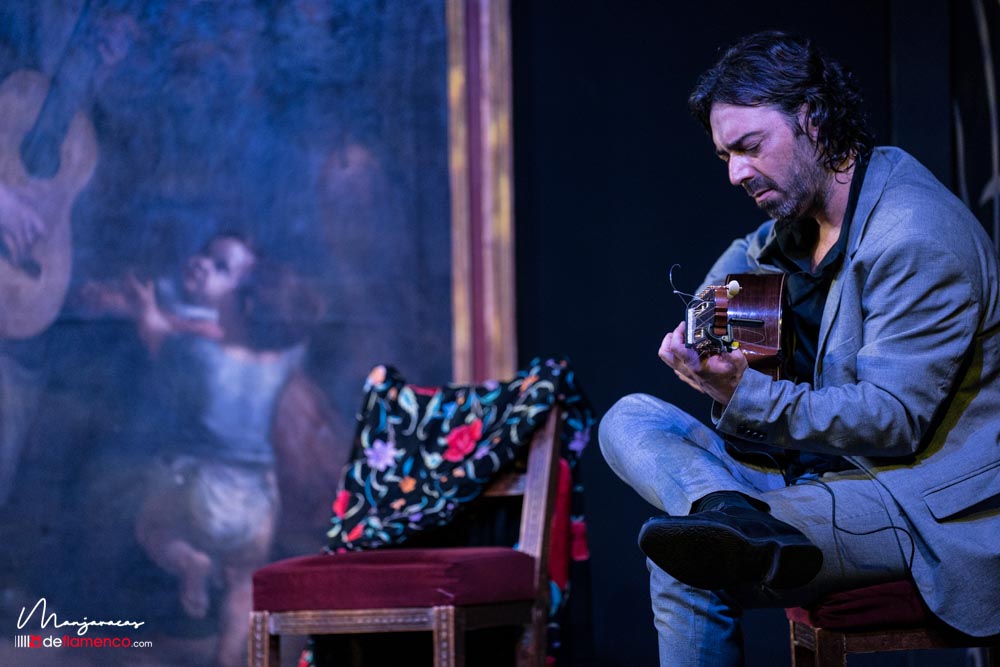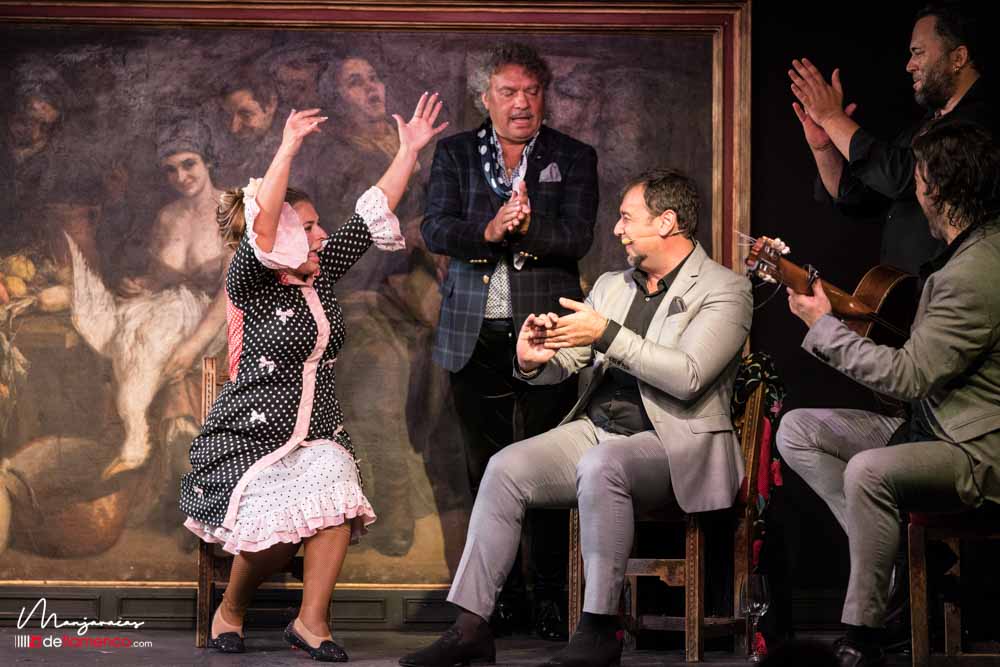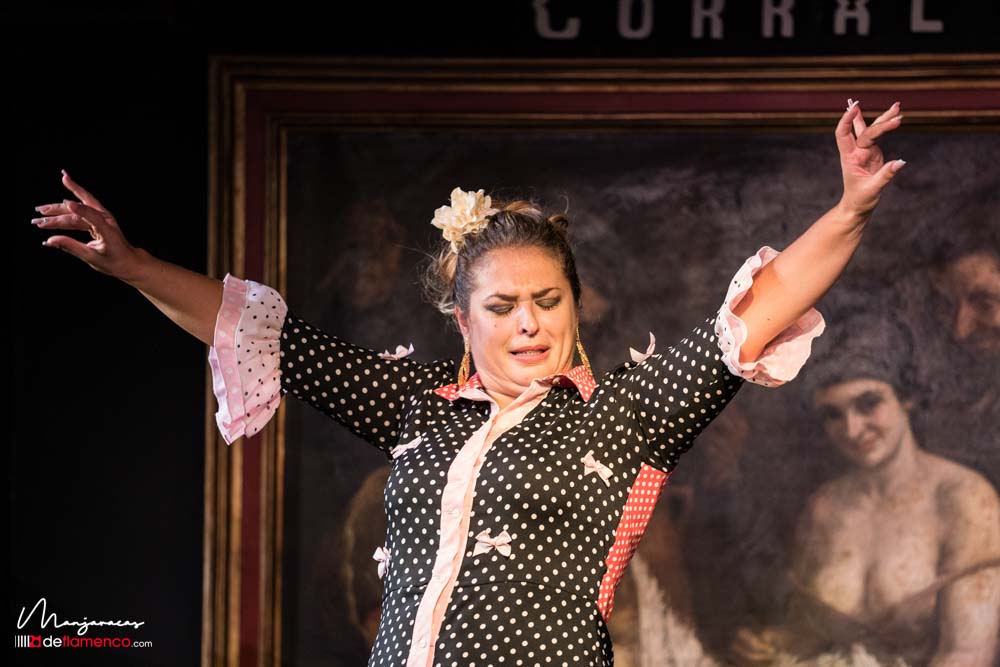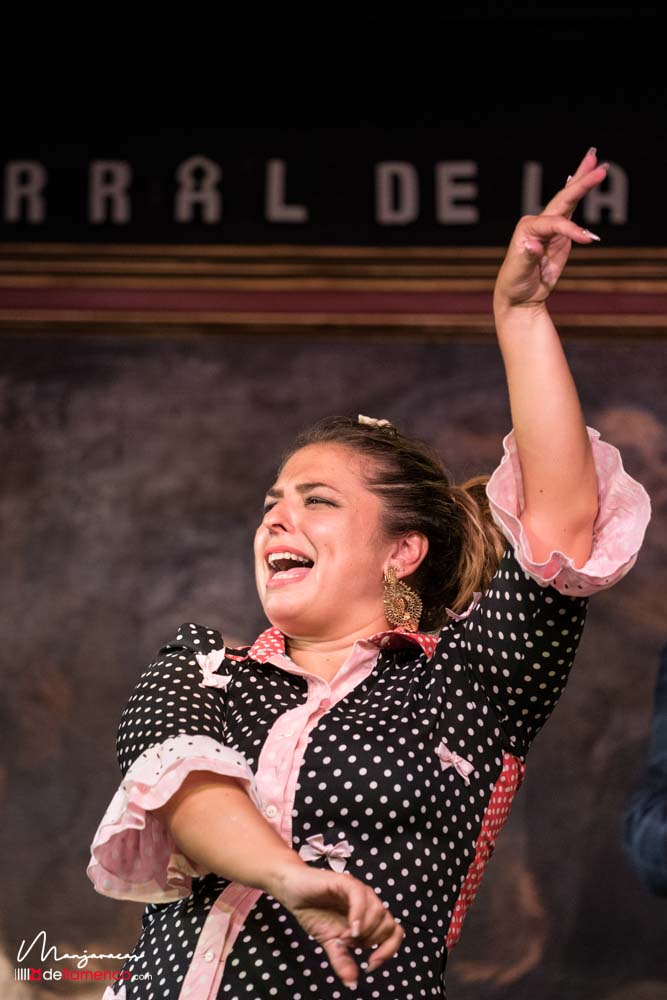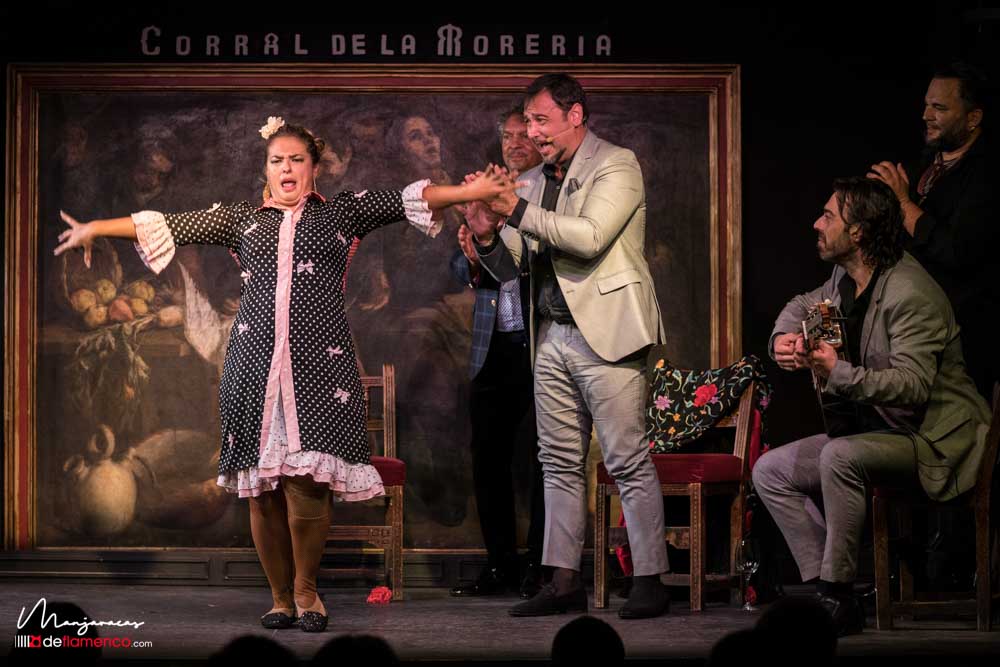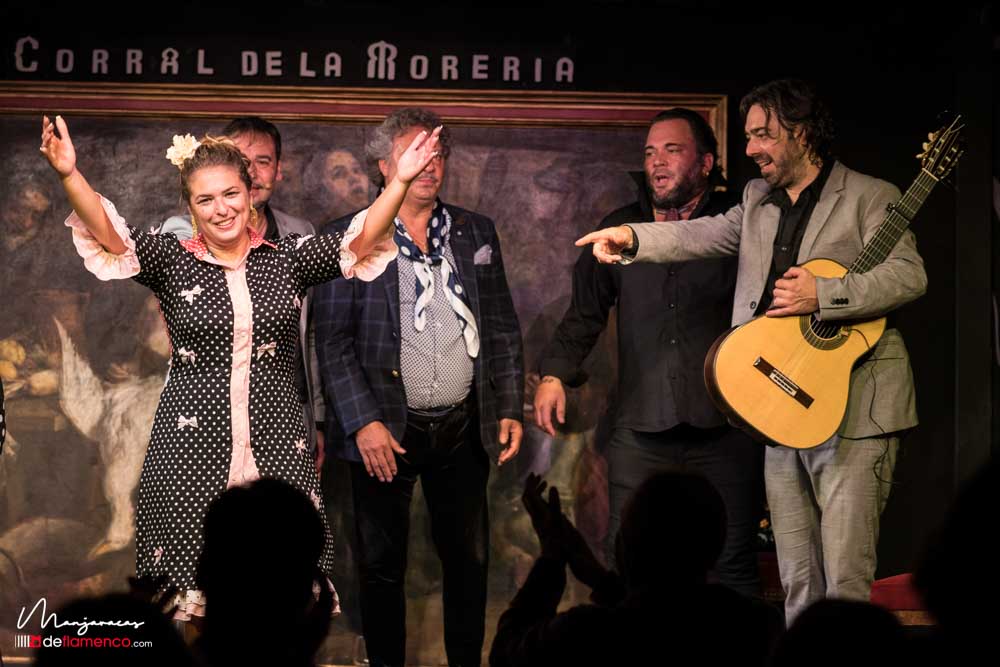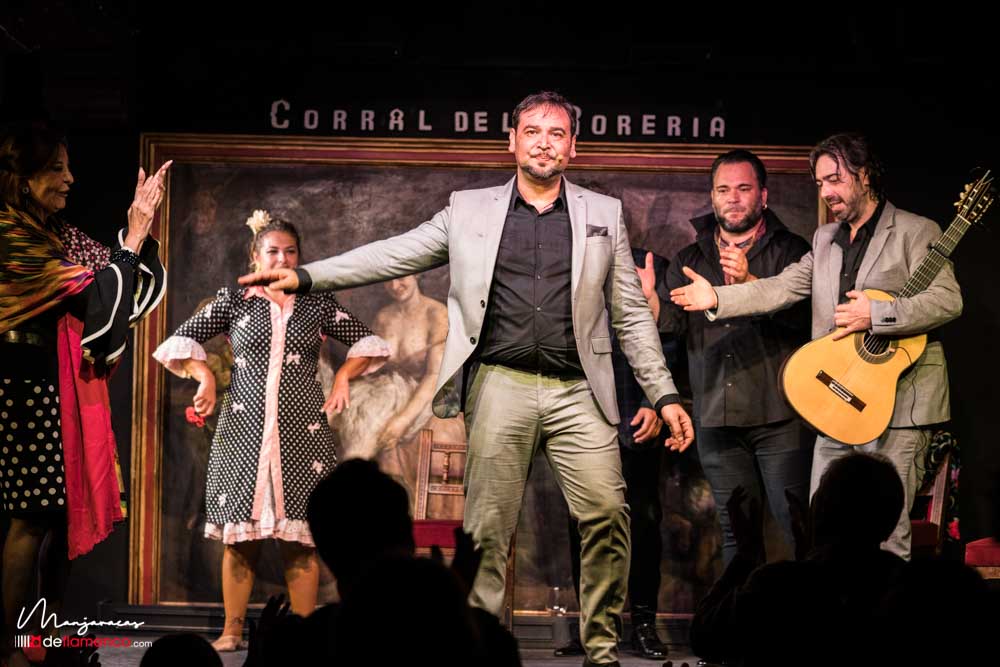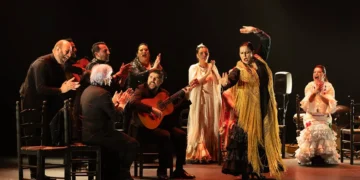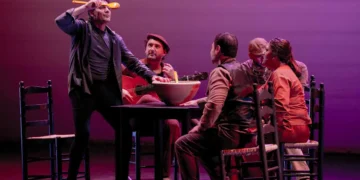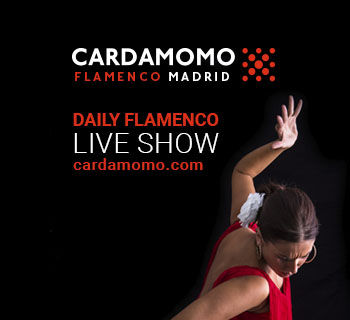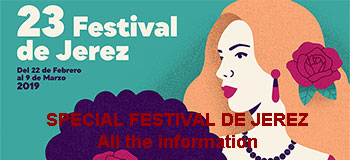Pastora Galván, José Valencia, Juan Requena
Anthological gala show of the Círculo Flamenco de Madrid at Corral de la Morería
José Manuel Gómez Gufi
José Valencia is a singer who warrants being followed and listened to with your five senses because they – the senses – give it all back multiplied. That’s when flamenco practices the culture of effort which is as much faith as entertainment. Valencia has an archaic sound in his voice that reminds you of what the elders spoke of, the “soníos negros”, black sounds, and profound meaning. By his side, Juan Requena on guitar, gives the best backup, never seeking attention until the performance requires some heat, and then he pulls things out of his hat, from his hands and from the strings, and there you are waiting for the replay to see if you can catch what he did and where that sound came from, and you’re left disappointed because no replay is forthcoming.
Pastora came on challenging the silence, bearing her grounded heels with a hard concentrated gesture and arms in cubist position (remember, this is the sister of Israel Galván, and that predisposes a tendency to the decontruction of elements). You can spot shared moves in the Galván siblings, just as we see familiar gestures in the great guitar and singing families. Nevertheless, Pastora surrenders to dramatics, something difficult to find in Israel and which, as far as I can tell, gives the impression of his having thought out all his dances beforehand.
Between one thing and another, it seemed like it was José Valencia who was in charge of deconstructing the verses, whether in siguiriyas or malagueña in which he conjured up the smell of incense and cathedrals.
There was a good atmosphere among the audience at Corral de la Morería who cheered the artists enthusiastically until Perrete and Manuel Tañé came on. With the heat of the rhythm, we heard the verse “si tú eres veleta, yo soy el aire”, “if you are the weathervane, I am the wind”, and Pastora returned for soleá wearing a fringed black dress. Valencia prefaced with tientos/tangos and then Juan Requena was alone with his guitar to play a traditional solo piece. I know Paco de Lucía used to play solo on stage, and that it’s customary, but the tablao is such a good place to debut a composition of any type. One way or another, there was still the bulerías ending, because there were so many, and all good. Pastora came on with a house-dress with many layers and polkadots, and to flesh out the concept, no heeled shoes, just flat slippers. And an old-time fiesta got underway, without guitar (we know there are many guitarists, and lots of them very good, but sometimes we need a break), Straight-ahead rhythm with Valencia good enough to eat and Pastora in a state of ecstasy dancing like the oldtimers of Triana, with little shame as we saw in the documentary “Triana, Pura y Pura”, and in some episode of Rito y Geografía del Cante” filmed in Jerez.
And that was when we saw Pastora, throwing her shoes aside with abandon, hiking up her skirt and its many layers, moving the rear like the oldtimers in one of those dances that got you excommunicated anywhere and everywhere. And we got involved in those battles of another era, and then Pastora gestured like a bull, with her two index fingers for horns, and she charged the air to let it be known that “we get modern in the same time and place where we remember the grandparents, and especially the grandmothers”. That’s when we know, without a doubt, that flamenco is still alive.




